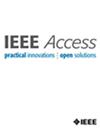Hypergraph Neural Sheaf Diffusion: A Symmetric Simplicial Set Framework for Higher-Order Learning
IF 3.6
3区 计算机科学
Q2 COMPUTER SCIENCE, INFORMATION SYSTEMS
引用次数: 0
Abstract
The absence of intrinsic adjacency relations and orientation systems in hypergraphs creates fundamental challenges for constructing sheaf Laplacians of arbitrary degrees. We resolve these limitations through symmetric simplicial sets derived directly from hypergraphs, called symmetric simplicial lifting, which encode all possible oriented subrelations within each hyperedge as ordered tuples. This construction canonically defines adjacency via facet maps while inherently preserving hyperedge provenance. We establish that the normalized degree zero sheaf Laplacian on our symmetric simplicial lifting reduces exactly to the traditional graph normalized sheaf Laplacian when restricted to graphs, validating its mathematical consistency with prior graph-based sheaf theory. Furthermore, the induced structure preserves all structural information from the original hypergraph, ensuring that every multi-way relational detail is faithfully retained. Leveraging this framework, we introduce Hypergraph Neural Sheaf Diffusion (HNSD), the first principled extension of neural sheaf diffusion to hypergraphs. HNSD operates via normalized degree zero sheaf Laplacian over symmetric simplicial lifting, resolving orientation ambiguity and adjacency sparsity inherent to hypergraph learning. Experimental evaluations demonstrate HNSD’s competitive performance across established benchmarks.超图神经束扩散:用于高阶学习的对称简单集框架
超图中不存在固有的邻接关系和定向系统,这给构造任意度的束拉普拉斯算子带来了根本性的挑战。我们通过直接从超图派生的对称简单集来解决这些限制,称为对称简单提升,它将每个超边内所有可能的有向子关系编码为有序元组。这种构造通常通过facet映射定义邻接性,同时固有地保留超边缘来源。我们建立了对称简单提升上归一化的零次束拉普拉斯算子,当限制在图上时,可以精确地简化为传统的图归一化束拉普拉斯算子,验证了它与先前基于图的束理论的数学一致性。此外,诱导结构保留了原始超图的所有结构信息,确保忠实地保留了每个多向关系细节。利用这个框架,我们引入了超图神经束扩散(HNSD),这是神经束扩散到超图的第一个原则性扩展。HNSD通过对称简单提升上的归一化零度层拉普拉斯算子进行操作,解决了超图学习固有的方向模糊和邻接稀疏性。实验评估证明了HNSD在既定基准上的竞争表现。
本文章由计算机程序翻译,如有差异,请以英文原文为准。
求助全文
约1分钟内获得全文
求助全文
来源期刊

IEEE Access
COMPUTER SCIENCE, INFORMATION SYSTEMSENGIN-ENGINEERING, ELECTRICAL & ELECTRONIC
CiteScore
9.80
自引率
7.70%
发文量
6673
审稿时长
6 weeks
期刊介绍:
IEEE Access® is a multidisciplinary, open access (OA), applications-oriented, all-electronic archival journal that continuously presents the results of original research or development across all of IEEE''s fields of interest.
IEEE Access will publish articles that are of high interest to readers, original, technically correct, and clearly presented. Supported by author publication charges (APC), its hallmarks are a rapid peer review and publication process with open access to all readers. Unlike IEEE''s traditional Transactions or Journals, reviews are "binary", in that reviewers will either Accept or Reject an article in the form it is submitted in order to achieve rapid turnaround. Especially encouraged are submissions on:
Multidisciplinary topics, or applications-oriented articles and negative results that do not fit within the scope of IEEE''s traditional journals.
Practical articles discussing new experiments or measurement techniques, interesting solutions to engineering.
Development of new or improved fabrication or manufacturing techniques.
Reviews or survey articles of new or evolving fields oriented to assist others in understanding the new area.
 求助内容:
求助内容: 应助结果提醒方式:
应助结果提醒方式:


